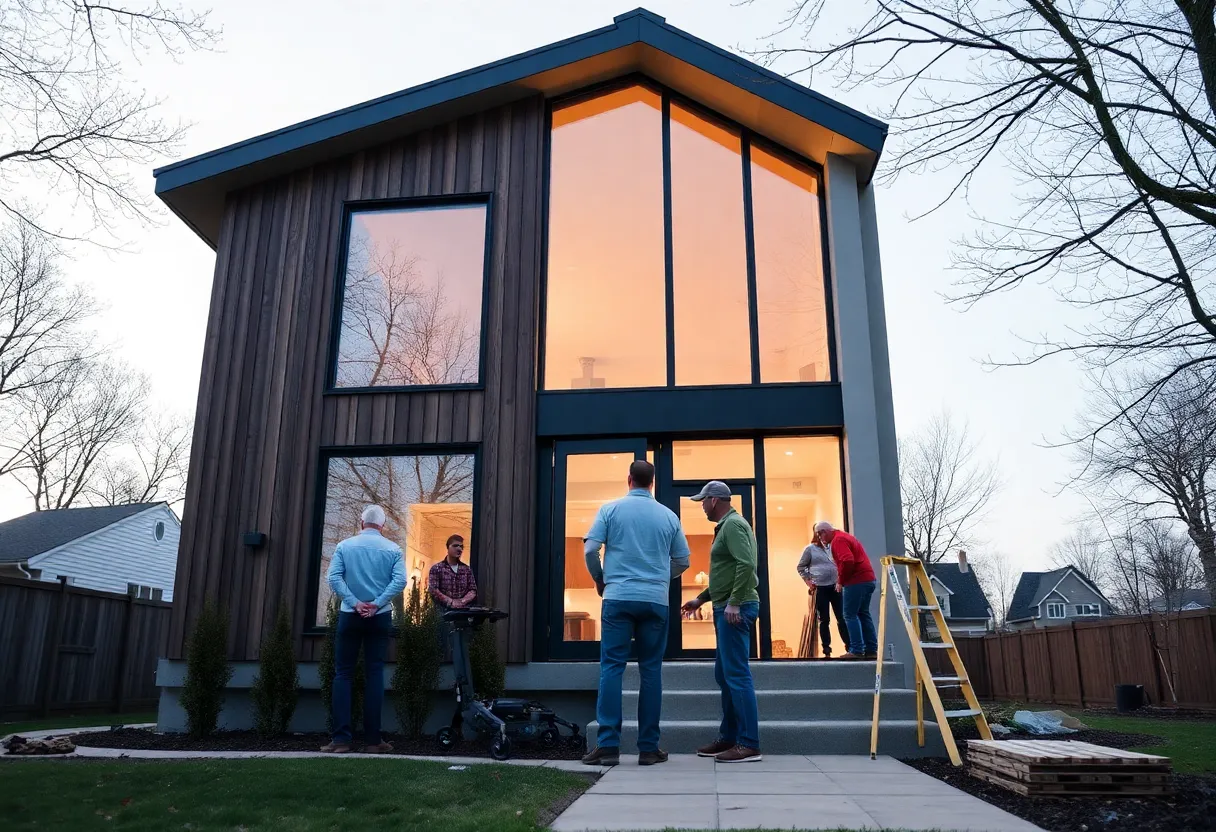How to Effectively Plan Your Home Addition: A Comprehensive Guide for Homeowners
Expanding your living space through a home addition offers an excellent way to increase property value, enhance functionality, and improve your quality of life. However, accomplishing this successfully requires meticulous planning and execution. Proper planning minimizes unexpected costs, delays, and frustrations. This guide provides a comprehensive overview of the critical steps necessary for an effective home addition project.
Understanding the Scope and Objectives of Your Home Addition
Define Your Goals Clearly
Begin by articulating specific objectives for your addition. Are you expanding living rooms, adding a bedroom, creating a home office, or installing a new bathroom? Clearly defining your goals helps shape the design, budget, and timeline.
Assess Current Space and Future Needs
Evaluate existing areas’ limitations to determine how the new space can best serve your needs. Anticipate future requirements to ensure the addition remains functional over time, minimizing the need for subsequent renovations.
Research Local Regulations and Zoning Laws
Understanding local building codes, zoning restrictions, setback requirements, and permit obligations is essential. Non-compliance can result in costly delays or legal issues. Consult local planning offices or review municipal websites for relevant regulations.
Preliminary Planning and Design Phase
Develop a Realistic Budget
Estimate all costs, including design, permits, construction, materials, and contingency funds. Allocate funds for unforeseen expenses; a buffer of 10-20% is recommended. Clearly outline your maximum budget to guide design choices.
Engage Professional Help
Work with experienced architects or designers to develop preliminary plans. Their expertise ensures your vision is translated into practical, code-compliant designs. A qualified architect can also provide insights into structural integrity and optimal space utilization.
Create Detailed Design Plans
Develop comprehensive drawings that specify dimensions, materials, finishes, and features. Ensure designs maximize functionality, aesthetic appeal, and energy efficiency. Detailed plans facilitate accurate cost estimates and construction planning.
Feasibility Analysis and Site Evaluation
Conduct Site Assessments
Evaluate the property’s topography, soil stability, drainage, and existing structures. Conduct a survey to identify property boundaries and easements. This ensures your plans are feasible and compliant with property limitations.
Assess Structural Integrity
Determine whether your existing foundation and framing can support the addition. Structural modifications may be necessary, impacting costs and timelines.
Consider Environmental and Utility Factors
Review utility access, such as water, electricity, gas, and sewage. Identify potential challenges and integrate solutions early to avoid delays.
Developing a Comprehensive Timeline and Project Plan
Establish Realistic Milestones
Create a timeline that includes all phases—design, permitting, bidding, construction, inspections, and finishing. Factor in possible delays caused by weather or permit processing times.
Coordinate with Contractors and Suppliers
Obtain detailed bids from qualified contractors. Verify their experience, licensing, and references. Schedule deliveries of materials in advance to avoid work stoppages.
Secure Necessary Permits and Approvals
Apply for all required permits before construction begins. This process varies by location but is crucial for legal compliance. Allow sufficient time for approval, as it can significantly impact your schedule.
Financial Planning and Cost Management
Establish a Funding Strategy
Determine how you’ll finance the project—savings, refinancing, or loans. Ensure funds are available when needed, particularly for upfront costs and contingency reserves.
Implement Cost Control Measures
Maintain detailed records of expenses. Regularly review project costs against the budget. Negotiate with suppliers and contractors for best prices but avoid sacrificing quality.
Insurance Considerations
Review your homeowner’s insurance policy. Inform your insurer about the project to ensure adequate coverage. Consider additional coverage for construction-related risks.
Construction Phase: Execution and Supervision
Monitoring Progress Regularly
Conduct regular site visits. Keep an open line of communication with your contractor. Address issues promptly to stay on schedule and within budget.
Quality Assurance
Verify that work meets approved plans and quality standards. Insist on proper materials and workmanship. Professional inspections at key milestones ensure compliance and safety.
Managing Changes
Changes are inevitable; document all modifications in scope or design. Review costs and timelines before approval. Use written change orders to maintain clear records.
Post-Construction Procedures
Final Inspections and Approvals
Arrange for inspection by local authorities to confirm code compliance. Obtain occupancy permits or certificates of completion as required.
Cleanup and Interior Finishing
Ensure the site is thoroughly cleaned. Complete interior finishes, fixtures, and appliances. Address any punch-list items to finalize the project.
Project Documentation and Warranties
Keep all permits, contracts, warranties, and receipts organized. This documentation is valuable for future maintenance, resale, or warranty claims.
Additional Tips for Success
Effective Communication
Maintain transparent communication among all parties. Clarify expectations early, and document decisions throughout the project.
Realistic Expectations
Understand that delays and unforeseen issues may arise. Flexibility and patience are essential for a smooth process.
Long-term Planning
Consider how the addition affects your property’s value and future adaptability. Utilize energy-efficient designs and durable materials to maximize ROI and sustainability.
Conclusion
Effective planning for a home addition hinges on thorough research, precise design, meticulous budgeting, and proactive management. Adhering to the outlined steps ensures your project aligns with your objectives and minimizes potential risks. Carefully balancing ambition with practicality guarantees a successful upgrade to your home’s livability and value.
Author: STAFF HERE INDIANAPOLIS WRITER
The INDIANAPOLIS STAFF WRITER represents the experienced team at HEREIndianapolis.com, your go-to source for actionable local news and information in Indianapolis, Marion County, and beyond. Specializing in "news you can use," we cover essential topics like product reviews for personal and business needs, local business directories, politics, real estate trends, neighborhood insights, and state news affecting the area—with deep expertise drawn from years of dedicated reporting and strong community input, including local press releases and business updates. We deliver top reporting on high-value events such as the Indianapolis 500, Indy Jazz Fest, and the Indiana State Fair. Our coverage extends to key organizations like the Indy Chamber and Visit Indy, plus leading businesses in motorsports and healthcare that power the local economy such as Indianapolis Motor Speedway and IU Health. As part of the broader HERE network, we provide comprehensive, credible insights into Indiana's dynamic landscape.





